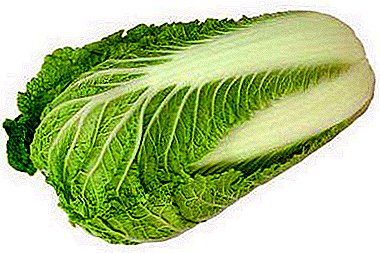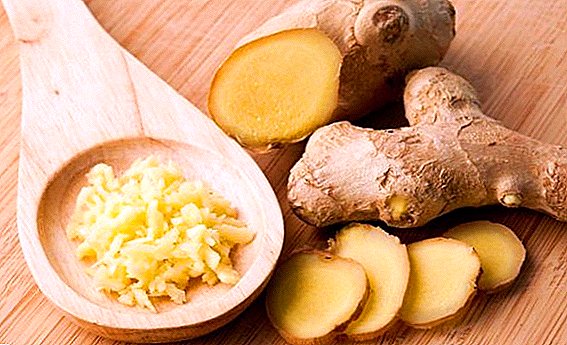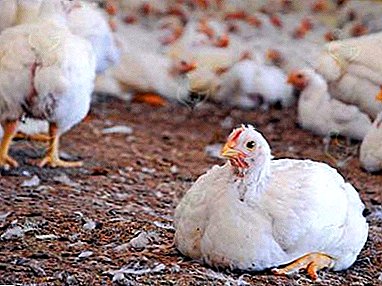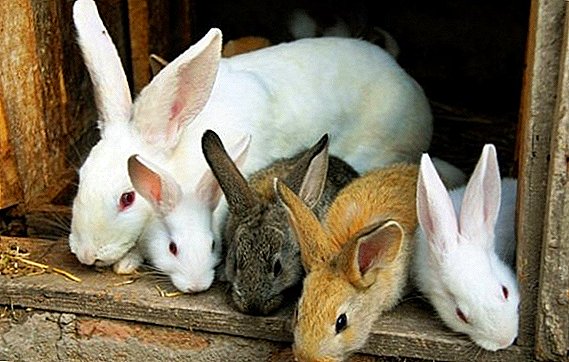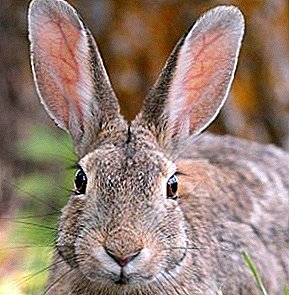 Beginning rabbit breeders, having decided on the purpose of breeding eared animals, first choose a breed.
Beginning rabbit breeders, having decided on the purpose of breeding eared animals, first choose a breed.
Then they will have another important stage - to select healthy animals for the tribe, to transport and adapt them to a new place so as not to lose a single individual.
Consider how best to do this.
What breed of rabbits to choose for breeding
Initially, you should choose the direction for which you need a rabbit (meat, skins or fluff) and the place of detention (room or street cage). Then you can proceed to the choice of breed and get acquainted with its features.
Did you know? In rabbits, you can use meat, skins, down, skin, feces. Rabbit skin, valued for its softness, suitable for the production of light footwear and leather goods. Manure is not inferior in quality to the cow and perfectly supplies the soil with organic matter, contains a lot of potassium and nitrogenous compounds.
For meat
Rabbits of such breeds are characterized by rapid weight gain and can be scored in 2-3 months.
Check out the most worthy breeds of meat rabbits.
The most common breeds of meat are the following:
- "White New Zealand". Gain an average of 4.5 kg, fertile - females give birth to 8-10 rabbits at a time.
- "Red New Zealand". The skin has reddish shades, usually gaining weight in 4.5 kg.
- "Flandre". They are highly productive and can reach 25 kg, but they usually weigh 10 kg. Rabbits of 2 months of age already weigh 2 kg, unpretentious.
- "French sheep". Rabbits of this breed gain weight up to 12 kg and at the same time economically consume feed. Females in one litter give birth on average to 9 cubs.
- Californian. The average weight of 4.5 kg, demanding to feed.

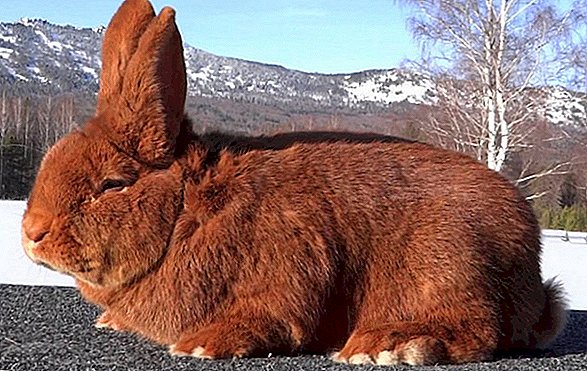
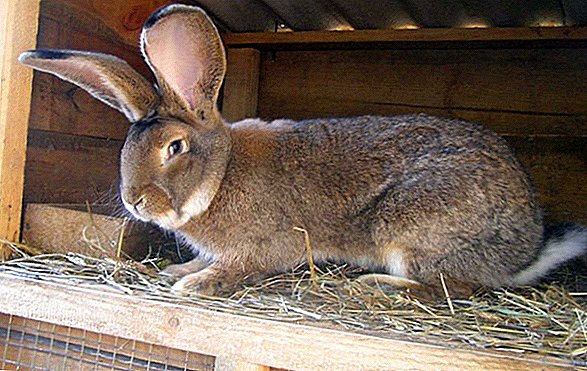
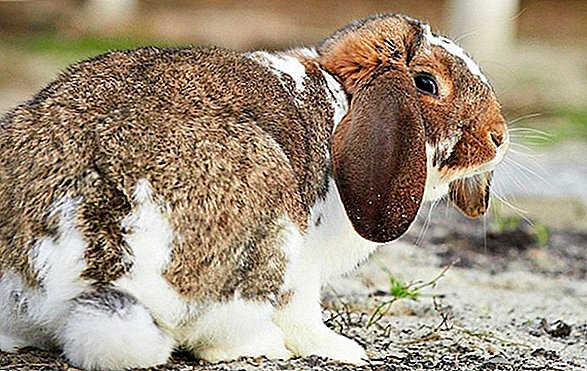
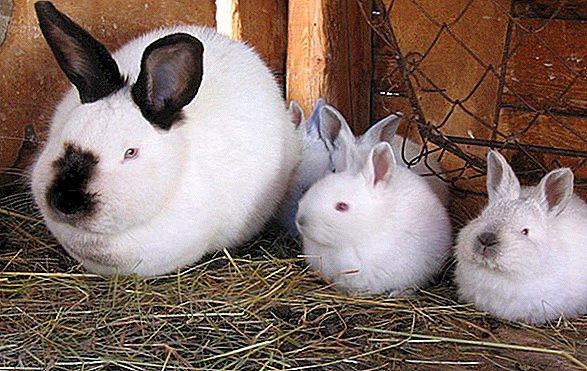
On the skins
Usually these rabbits have meat-skin direction and are the most popular.
These include such breeds:
- "Soviet chinchilla". This is an unpretentious breed, suitable for both meat and fur. The weight of an adult animal reaches 5 kg, and the weight is gained quickly - a 4-month-old rabbit weighs already 4 kg.
- "White Giant". The old well-deserved breed, gaining weight up to 8 kg, although an average of 5.5 kg is reached. High slaughter yield (83%), hardy and unpretentious, but gaining weight is not fast, but you can use white skin.
- "Gray Giant". Its skin has a black color and various shades of gray. Gain a mass of 4.5-7.5 kg and are well adapted to our climatic conditions.
- "Silver". They gain weight quickly and reach 6 kg, but weigh 4.5 kg on average. The skin of interesting silver hues.
- "Viennese blue". With an average weight of 4.5-5 kg, they quickly gain weight, their meat is highly valued. Suitable for fur interesting bluish tones. They are unpretentious and adapt to any climate.
- "Rex". The average weight of about 4 kg, gaining weight is not fast, but its meat has excellent taste. Have a valuable short-haired skin of various shades.
- "Butterfly". Adult specimens weigh 4-5 kg and have a valuable pelt with a spotty pattern.
- "Russian ermine". The fur of this breed is valuable because it is similar to the ermine. Weight within 4-5 kg.
- "Risen". In adulthood, they weigh 15 kg, have a high slaughter yield (up to 83%). The skin of different tones, from gray to blue, but often grown only because of the meat.
- "Black-brown rabbit". In this breed, meat of high taste, and skin are well appreciated. Weight ranges from 3-6 kg.
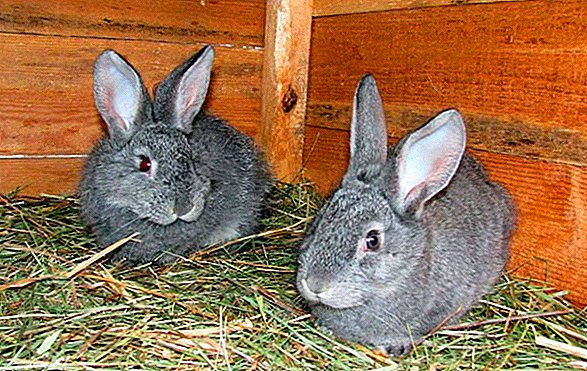
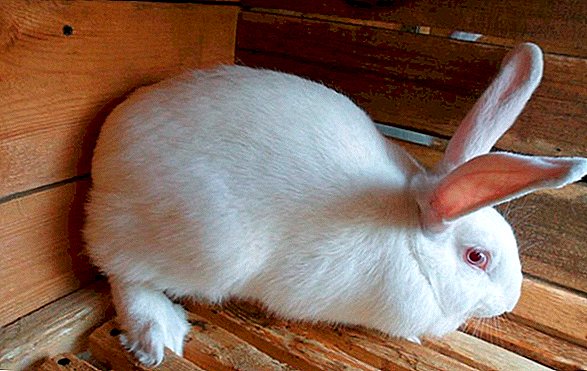
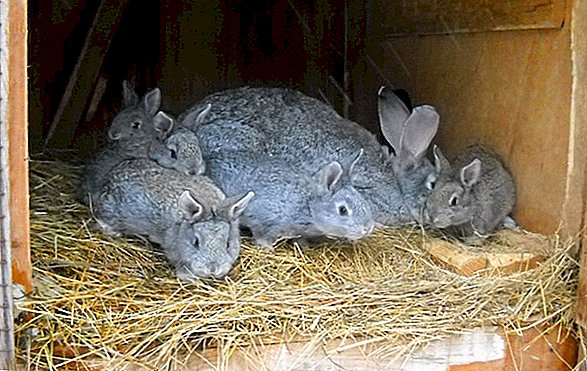
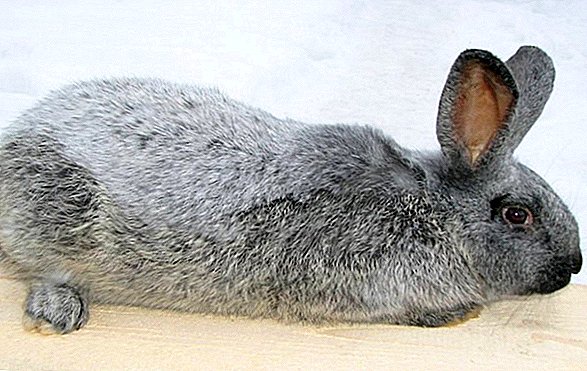
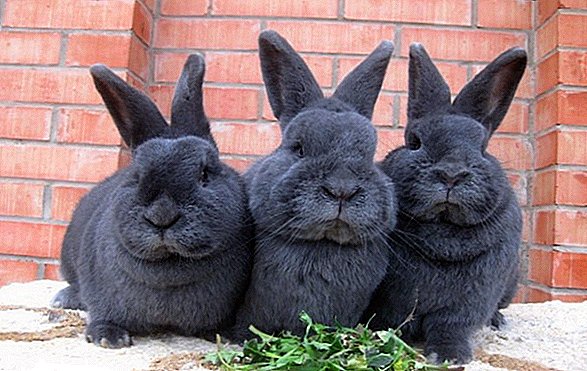
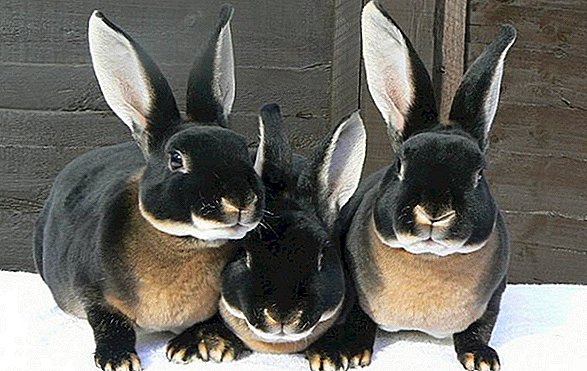
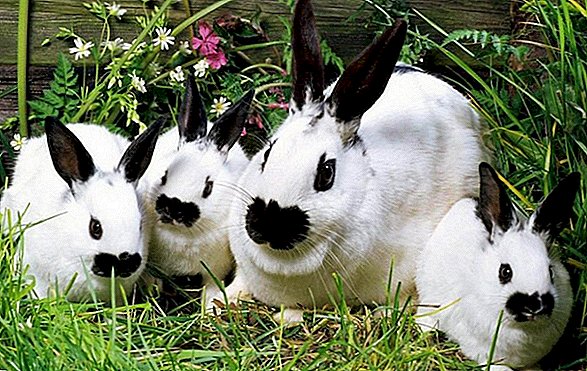
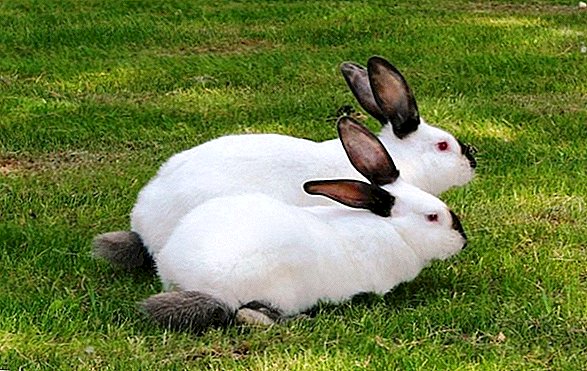
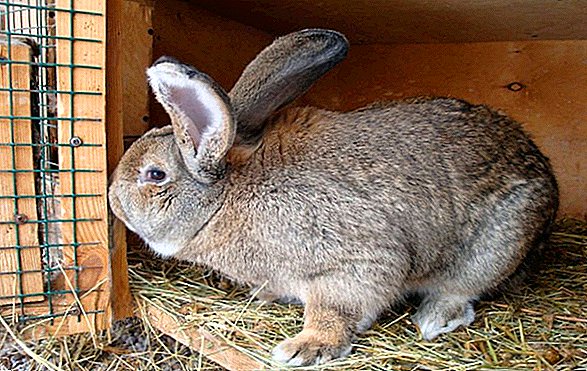
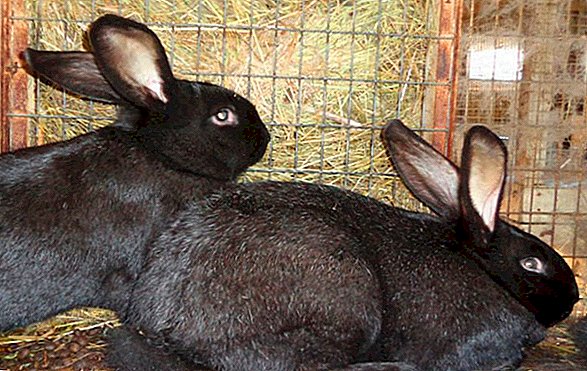
On fluff
With downy rabbits, a person can use down, skin and meat.
Did you know? Rabbit fluff retains heat well, so it is appreciated along with cashmere. Its undoubted advantage is simpler processing, since it does not need to be washed, dried, separated awn, and so on.
In the CIS, only two breeds of this type are bred:
- "Angora downy breed of rabbits". They have a silky thick fur about 22 cm long, can have any color. Weight does not exceed 3 kg.
- "White downy breed of rabbits". A more common breed with white fur, usually reaching a weight of 4 kg. Fertile - 7 cubs in the litter.


At what age is better to buy
Acquisition of small rabbits will be unsuccessful - toddlers are more susceptible to various stresses than an adult animal. Early weaning from mother's milk, or the period of adaptation to adult food, negatively affects the health of baby rabbits, so this is not the best time to buy.
They should be bought when the digestive system is already ripe (3-4 months). In no case can not buy before 2 months.
At 4-6 months, baby rabbits already look like adults and are the most stable - this is a more suitable age to buy, but the price will be higher.
Buying an adult copy is also acceptable, but adolescents are better accustomed to a new place of residence and other people. The new place and conditions may adversely affect the reproduction of adult rabbits. For a pregnant rabbit, such a move can be too stressful.
Familiarize yourself with the best representatives of giant rabbits, downy and fur, decorative, white rabbits.
Obvious signs of a sick rabbit
It is very important when buying a rabbit to choose healthy individuals. 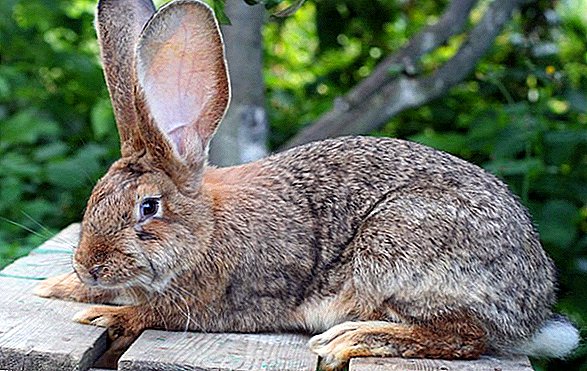 To do this, you need to pay attention to the visible signs of ailments:
To do this, you need to pay attention to the visible signs of ailments:
- red mucous eyes, nose and mouth;
- sour eyes, tearing;
- nasal discharge (a wet nose is a sign of a sick animal, and a dry nose is a healthy one);
- sputum on the chin and chest;
- bald patches of hair, redness, peeling and ulcers on the body;
- the presence of cones and tumors on the body;
- puffy belly or compaction (talking about digestive disorders);
- redness or discharge from the genitals;
- if the animal defecates when you have a liquid feces;
- redness on the anus or a dirty buttock with signs of diarrhea;
- red or dirty ears, discharge from them, sores on the ears (if a rabbit tries to scratch them all the time, this is a sign of ticks);
- visible signs of physical damage and deficiencies (disproportion, thinness or obesity, etc.);
- behavior: the sick rabbit will not be interested in the environment, he usually sits in a corner of the cage.
Important! If possible, ask the seller about the availability of vaccines. Usually they begin to make young animals at the age of 45 days. Ask about the presence of a pedigree certificate and health certificate from a veterinarian. If there are no such documents, then it is safer to do revaccination yourself.
What you need to inspect to check health
Even if there are no obvious signs of illness, the animal purchased by the tribe should be carefully examined. You can even pre-make a list of what to pay attention to and what to ask the seller. 
Muzzle
External inspection is better to start with a muzzle. If the mucous membrane of the nose is wet, it means that the animal is sick and should be treated. Strong saliva secretion and its presence in the chin area indicate stomatitis.
But at this point the seller can eliminate before the inspection, wiping his face and neck thoroughly. Therefore, it is also necessary to check the inside of the front paws, with which the crawls wipe off excess saliva - they will have stuck wool.
If there are signs of baldness and dried spotting at the tip of the muzzle, this does not always mean illness. Just the animal could be injured from the constant friction on the feeder or sennik. But also a similar phenomenon can be caused by deprivation, dermatitis and other skin diseases.
Inspect carefully eyes. They should not tear or fester, and the eyelids should not be reddened. All these signs signal infectious rhinitis, myxomatosis.
Find out what diseases exist in rabbits, in particular about the symptoms and treatment of myxomatosis, as well as how to manifest and how to treat coccidiosis, pasteurellosis and ear sores in rabbits.
It is better not to approach such a rabbit and not to touch it, in order not to become a peddler of the infection.
The look of the animal should not be scattered and constantly jump. This may be due to diseases of the vestibular apparatus. If there is a white spot in the eye, then it is a sign of cataracts.  Another cause of tearing can be increased tooth growth inside the flesh, which causes pressure on the eyeball. This is a birth defect and is transmitted genetically. The incisors in the event of such a deviation also grow and grind throughout life.
Another cause of tearing can be increased tooth growth inside the flesh, which causes pressure on the eyeball. This is a birth defect and is transmitted genetically. The incisors in the event of such a deviation also grow and grind throughout life.
A sign of such a deviation is the jaw pushed forward with protruding outgrown incisors that look like tusks.
The bite of the animal must be correct.
Ears and auricles
Quite often, looking into the ears of a rabbit, you can notice a scab due to the presence of an ear tick. It is a non-dangerous disease that should not be run. It is easy to cure it with the help of special ointments and washes. It is worth considering that a sick rabbit can infect an entire population with such a disease, therefore it is better to refuse to buy it.
Korosta has the form of loose dark formations located in the ear apertures. At the very beginning, the disease manifests itself in the form of small reddish tubercles. You should know that myxomas also appear in the same way when the animal is sick with myxomatosis.
This acute infectious disease that causes great damage to the rabbit breeders. Therefore, it is necessary to consider other areas not covered with wool - nose, lips, eyelids, genitals. If all other areas are clean, then it is most likely psoroptosis (rabbit disease caused by ticks).
In general, the ears should be clean without any education. 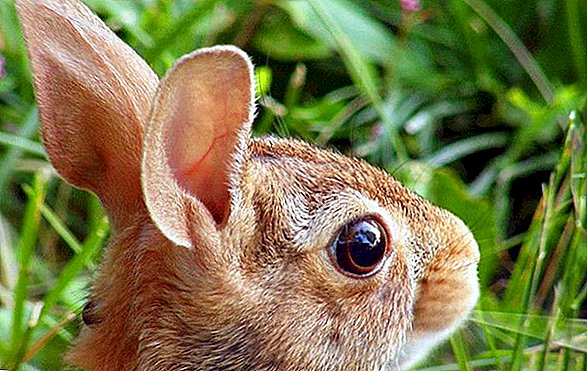
Wool and skin
The coat must be clean and shiny. Fur in short-haired breeds should resemble plush. It is important to check the rabbit for the presence of lice, fleas and ticks. Not all parasites can be seen with the armed eye, so you need to pay attention to the quality of wool.
So, signs of the presence of skin parasites are: bald spots, crumpled shreds of fur, dull appearance of wool, the presence of dandruff.
The main thing is not to confuse natural molting with diseases. When a rabbit molt, the skin always remains smooth, there is no redness, scaly areas that have clear round-oval forms.
You should also pay attention to the presence of hematomas that occur in young rabbits due to fights. This is blood that has accumulated in the hypodermic sinuses. It can become inflamed or rot, which can lead to many troubles - blood poisoning, paralysis, and other problems.
The presence of cones on the body can signal a very dangerous disease for rabbits - myxomatosis. This viral disease is very contagious and deadly. 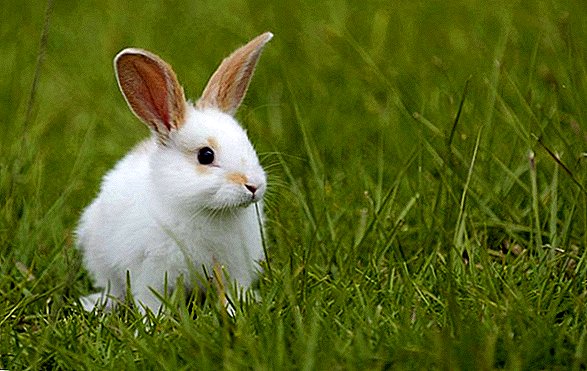
Back of the torso
If a bunny has a dirty ass, it is better not to even consider it as a purchase. Often this is a signal of an infectious disease or digestive problems that can end in tears for a rabbit. The hair in the tail area should be clean and dry.
And the excrement near the rabbit should be roundish, dark color; they should not smell and stick together.
In the area of the buttocks and genitals there should be no inflammatory processes, the surface should be smooth. In the presence of intracavitary parasites, the rabbit is thin, and around the anus, damage and reddening are visible due to the constant scratching.
Limbs
Hind and front legs must be strong and proportionate to the body, and also have a good edge. No defects in the form of clubfoot or close hind legs are allowed. It is important to consider the edge of the legs.
The lack of hair on the paws indicates a predisposition to such a disease as poddermatit. This disease often arises due to prolonged content on the mesh surface of the floor and manifests itself in the form of wounds and abscesses on the soles of the feet. 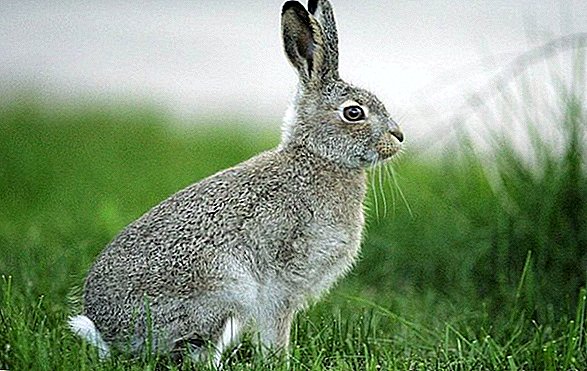
Listen to the lungs
Experts recommend that when you purchase a rabbit, turn it back and close one nostril in turn and then the other. In this case, the breathing of rabbits should be free, and snot and wheezing should be absent. You can simply put your ear to your back and listen to the lungs of the animal.
If there is wheezing in the lungs, it is well bugged in this way. In addition, redness of the eyelids, tearing of the eyes, a wet nose, and discharge from it, as well as reduced activity of the ear can additionally signal a lung disease.
Important! Inspection of the rabbits for purchase, in order not to carry the infection into their own farm, it is better to produce with gloves, which must then be destroyed. Moreover, the clothes will then need to be changed immediately, as well as take a shower or wash open areas of the body with soap and water before visiting their pets.
How to choose a rabbit on the tribe
When selecting animals for a tribe, one should be extremely careful and put forward high demands.
Male
The correct choice of a male for a tribe is very important, since the further quantity and quality of offspring depends on his sexual activity and ability to reproduce. In a rabbit, puberty occurs when it reaches 60-70 days. 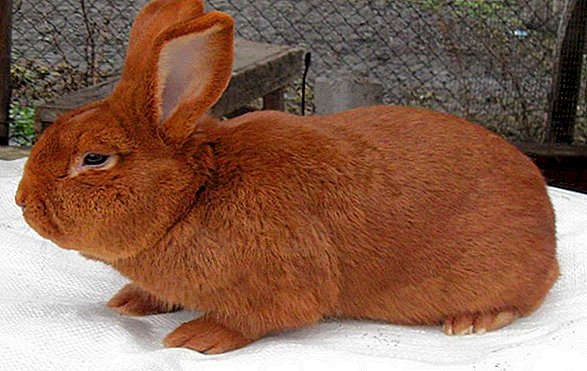 During this period, the rabbits are seated in individual cells. For breeding, they will be fully prepared after six months, and in some large breeds - only after seven.
During this period, the rabbits are seated in individual cells. For breeding, they will be fully prepared after six months, and in some large breeds - only after seven.
General requirements:
- The manufacturer must be healthy. Such an animal has a wonderful appetite and it eats up all the food.
- The male for breeding should not be overweight, as this factor reduces sexual activity.
- Lack of weight is also unacceptable, such a rabbit will give weak offspring. It should be average feed (you should consider the characteristics of the breed)
- Also, he should be quite mobile, active, have a good body composition.
- The head of a male rabbit should be rather large and short, the neck must be thick, and the chest should be wide and developed.
- Must be developed muscles in the lumbar region and in the hips.
- Bone skeleton must be thin, but strong.
- The hind legs are correctly positioned in relation to the body and have a good edge.
- No flaws in the composition of the body - hunchback, curvature of the legs and other physical defects.
It is not necessary to choose a tribe of rabbits with "feminine" signs:
- small head;
- skin folds on the neck;
- elongated and thinish neck.
In addition, the male must demonstrate superiority in their behavior. 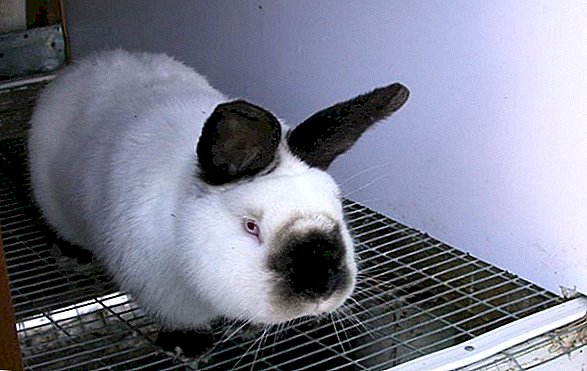 Not superfluous will be a careful examination of the male genital organs. Seed plants must be developed and in the amount of two pieces. They should not feel soft and soft.
Not superfluous will be a careful examination of the male genital organs. Seed plants must be developed and in the amount of two pieces. They should not feel soft and soft.
It happens that in young rabbits or in adult males who have not had mating for a long time, the testes move into the inguinal tubes, and they are not very pronounced. If you gently massage the lower abdomen, the testes will move into the testes.
It is also necessary to pay attention to the development of the penis. In a young rabbit it will look like a tube with a hole, and in an adult it will look like a sharpened pencil.
On the tribe is best to choose rabbits that were born in early spring. Their period of development and growth corresponds to a warm period, which has a positive effect in terms of feed and temperature. These factors have a good effect on the whole body of the future producer, which will positively affect future offspring.
Did you know? A rabbit in three years is able to produce about 1000 rabbits as a father, as well as up to 3000 - like a grandfather.
A rabbit with good sexual activity can fertilize 2-3 females per day. But constantly exploiting the male as a producer is not worth it, since a strong load reduces his fertility ability and leads to a rapid extinction of activity. 
Females
For good offspring, the choice of a female for a tribe is no less important than the choice of a male. Female rabbits reach sexual maturity at 3 months of age, but they should not be used for breeding, as their bodies are not strong enough.
When choosing a rabbit you need to pay attention to external data.
They must comply with the characteristics of the breed chosen:
- The weight of the female should be normal, since overweight rabbit fertilizes poorly, and with insufficient weight, they can not bear the offspring.
- It is important to pay attention to the number and general condition of the nipples. There should be no signs of mastitis on the nipples, that is, no seals, and the number of nipples is 4-5 pairs, no less.
- The bunny rabbit should have a small, slightly pointed head, a neck thinner than that of the males, and also the refined features of the muzzle.
- For good okrolov rear should be somewhat elongated with a wide pelvis, as well as with well developed muscles, not bony.
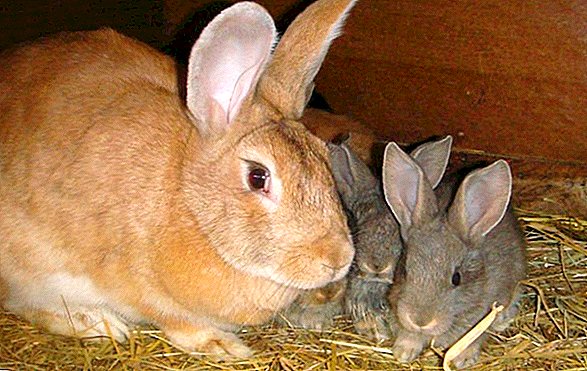 Of course, females must be completely healthy. In addition, their behavior should not be aggressive. Such a female will attack a partner and cover poorly. In addition, she may not be enough caring mother, and this is bad for future offspring.
Of course, females must be completely healthy. In addition, their behavior should not be aggressive. Such a female will attack a partner and cover poorly. In addition, she may not be enough caring mother, and this is bad for future offspring.Important! It is not necessary to take a female and a male from one nest on the tribe - close relations of affection will negatively affect offspring.
How to transport to the farm
After the acquisition, you must properly deliver the rabbits to the backyard farm.
To avoid damaging the health of rabbits during transportation, you should follow certain rules:
- Special containers for transportation. Они обязательно должны быть прочными и безопасными, чтобы зверьки не травмировались.
- Вентилирование. Transport containers must have openings for fresh air.
- Drinking water and feed. If the rabbits are collected to be transported for a short distance, it is enough to put a small amount of hay inside. But if the transportation is long, you will have to make a stop to feed and water the animals.
In the heat of rabbits, it is advisable to transport in the morning or evening to eliminate overheating and heat stroke. In winter, special insulated cells should be used for transportation. 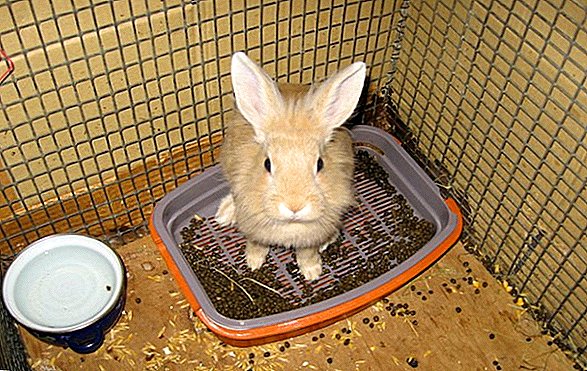
How to adapt them to a new place
After the rabbits are delivered to the place of their further residence, they should be moved to quarantine to prevent the whole herd from becoming infected in case the animals are sick. The duration of such a quarantine is one month.
The animals are kept in separate cells and provide vitamins, as well as special prophylactic drugs for various diseases. Nutrition during the adaptation period should be enhanced.
The rabbits are transferred to the new food gradually. Experts recommend to take a little hay and the usual feed from the previous owner, as well as learn the taste preferences of rabbits, so that moving and getting used to a new place will not become a big stress for them.
New rabbits do not need to plant in common cages to avoid fights over the territory. The rabbit and the rabbit, which are acquired by the tribe, must be kept in separate cages until the moment of mating.
When purchasing animals on the tribe should observe precautions. It is very important to choose for breeding healthy specimens without defects and with all breed characteristics. The most acceptable purchase will be directly from the breeder, from which it will be possible to observe the parents of the young stock purchased. 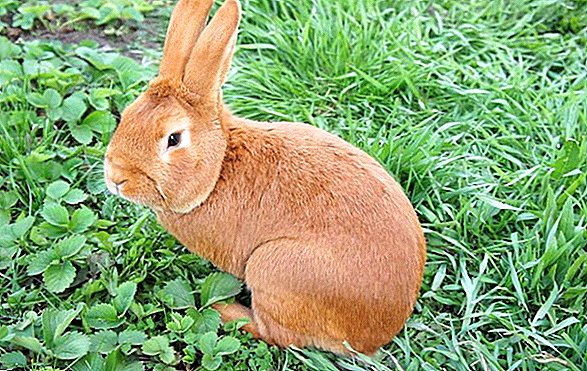 You can also buy the usual feed for rabbits from him and ask about the conditions of detention, vaccinations and other things.
You can also buy the usual feed for rabbits from him and ask about the conditions of detention, vaccinations and other things.








